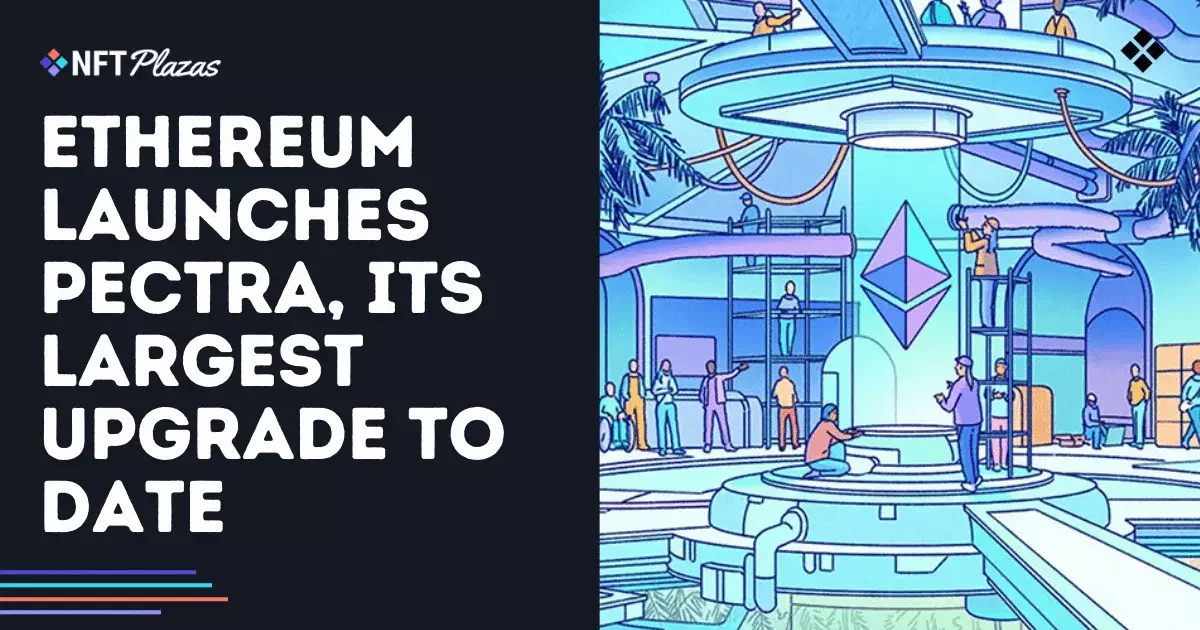The Ethereum blockchain has always been at the forefront of innovation within the cryptocurrency sphere. Recently, with the completion of the Pectra upgrade, Ethereum has taken yet another significant leap that promises to redefine not just the architecture of blockchain technology but potentially the entire crypto ecosystem. Following the Dencun upgrade, which occurred in March 2024, Pectra is a testament to Ethereum’s ongoing commitment to scalability and efficiency in an increasingly cluttered digital landscape.
This upgrade isn’t merely a refinement of existing capabilities; it is essentially a paradigm shift. In an industry rife with rapid advancements, Ethereum has showcased its ability to adapt and evolve by restructuring essential functions like account management, validator operations, and data processing. With the stakes higher than ever before, it’s imperative we evaluate what these changes truly mean for the future of blockchain technology.
Revolutionizing User Experience with Account Abstraction
One of the standout features of Pectra is the introduction of EIP-7702, which allows standard user accounts to operate with the flexibility typically reserved for smart contracts. This kind of account abstraction marks a pivotal moment in the user’s relationship with their wallets. Historically, the complexities of managing decentralized accounts have acted as a barrier to entry for many potential users. By making interactions simpler and more intuitive, Ethereum is making strides to democratize access to blockchain technology.
The user experience is paramount in determining the success of decentralized applications (dApps). With Pectra’s account abstraction, Ethereum positions itself to attract a broader audience that may have previously been hesitant to engage. This opens the door for innovations that require advanced functionalities but were previously limited by technological constraints.
Staking Revolution: Efficiency at Scale
Additionally, the Pectra upgrade significantly modifies staking dynamics with EIP-7251, raising the maximum stake per validator dramatically from 32 ETH to an impressive 2,048 ETH. Under this new framework, large validators can consolidate their positions, thereby reducing overhead operational costs. In a world where efficiency can dictate success or failure in blockchain initiatives, this change could be revolutionary.
However, we must examine a potential downside to this transformation: the concentration of power. With the capacity to stake significantly larger amounts, larger players may gain even more influence within the ecosystem. Ethereum’s ongoing challenge remains to maintain its decentralization ethos while improving performance, making the ramifications of this new staking structure a double-edged sword.
Enhancing Data Availability: The Future of Layer 2
Pectra’s focus on increasing data availability—evidenced by EIP-7691’s adjustment to the number of blobs from three to six per block—speaks directly to the needs of Layer 2 networks. These off-chain data clusters are critical for scaling solutions that aim to alleviate congestion and lower transaction fees. As more participants flood into Ethereum, response times and operational capacity will become crucial factors in maintaining user satisfaction.
However, simply increasing the capacity may not be sufficient. The urgent need for scalable solutions raises questions about how far Ethereum can truly go while still prioritizing decentralization. There’s a delicate balance to be struck in creating an environment that allows for innovation without sacrificing the core principles that initially attracted users to the blockchain—transparency, security, and inclusivity.
Future Outlook: The Road Ahead with Fusaka
While Pectra promises to address some pressing issues, the developer community is already shifting focus to the upcoming upgrade, Fusaka. As Ethereum anticipates further scaling improvements and additional features like PeerDAS, stakeholders must remain vigilant. Continuous evaluation of how these changes affect the network and its users is essential.
Though Pectra sets a strong foundation, it serves as merely a stepping stone in a longer journey towards a more capable and accessible Ethereum. While many are excited about its potential, the complexities of implementing these upgrades without jeopardizing mainstream adoption remain a challenging puzzle yet to be solved. Insights from developers, researchers, and users will be vital in shaping the narrative for Ethereum’s decentralized future.

